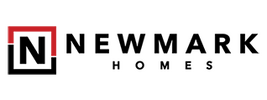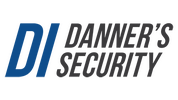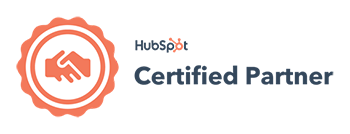Remote Work Best Practices for 2022December 13, 2021The number of remote employees working from home 5+ days per week rose from 17% to a 44% after the pandemic hit (Source: Statista), and over 26% of the workforce in the USA will likely remain remote. Is this your business’s first time doing remote or hybrid work? At Blue Sky, we’ve been a 100% remote company since the company was founded 10 years ago. While the rest of the world pivoted to adapt to a remote work environment, it was business as usual for Blue Sky, and our methods include a series of best practices for our team to scale as we grow. This article will spill the secret sauce: what do you need to have a thriving work-from-home environment? What does it take to be a successful 100% remote company?
Remote Work Statistics You Need to KnowFirst, some statistics about remote work. Although it hasn’t been the perfect fit for everyone, remote work is likely going to be a request many employees will make moving forward.
If you aren’t already working from home or cultivating a healthy hybrid environment, it will come back to bite you eventually as more potential employees express interest in hybrid or remote environments. 7 Tips to Successfully Work in a Remote Environment#1. A Single Project Management Tool & Source of TruthOur project management tool of choice is Asana. This scalable, flexible, and powerful project management tool allows the entire team to communicate and manage projects online. For your own team, we’d recommend a tool like Asana that has the following capabilities:
One of our favorite capabilities in Asana is the ability to seamlessly communicate and organize tasks per project, tag, or team member. It allows us to have true overhead visibility on all active (and completed!) projects within the same platform. NOTE: Similar project management tools we’ve seen our clients use include Slack, Monday.com, Jira, and Trello, but we have a clear bias for Asana! #2. Standardized ProcessesWithin Asana, Blue Sky has not only standardized how to name projects and tasks, but how we communicate with each other. Some key parts of our communication mix include:
Blue Sky also implements the use of cloneable templates for projects your team does often. A few examples include geospatial mapping projects, new website projects, new Google or Facebook Ad account creation, and new employee onboarding. Our Asana also includes links and guidelines for commonly asked HR questions, including written policies for PTO/Vacation, communication guidelines, and timekeeping expectations. Standardized processes for communicating and project management are key to thriving in a digital environment, and in our case, our standards are set and communicated with Asana. #3. Standardized Training and OnboardingA little different from overall process standardization, this is specifically about expectations for training and onboarding. Blue Sky uses a template that ensures all new employees are onboarded with the same training and taught the same best practices. At BSM, established team members share the load of training to let the newbie meet as many people as possible during remote onboarding. Training can take place in person in a co-workspace or remotely via a screenshare in Google Chat or Zoom, and each new employee is able to continue to ask questions about a specific onboarding task within their training project. #4. Positive, Communicative Work Culture Online and OfflineThere is no room for toxicity in an online work culture – unlike the rest of the internet, there’s no place for it when you’re communicating with your team in a tool like Asana. Not only is it unproductive, but there are little offline opportunities to resolve issues face to face. Instead, Blue Sky’s culture revolves around promoting an open and positive work culture offline and online. This includes:
Blue Sky also plans regular offline team meetings and team building activities. Team building meet ups have ranged from axe throwing, to karaoke in a beach house, to Octoberfest in a local bier garden. Our team has also taken team trips to New Orleans, Colorado, Cabo Mexico, and New York City. Offline team building is core to keeping a strong culture, even for activities as seemingly simple as a baby shower. #5. A Cloud Share Drive with Standardized Naming ConventionsCommitting to a secure cloud share drive is important for client and company security. Our tool of choice is Dropbox, but we’ve seen clients have success with tools like Microsoft OneDrive, Box, or Google Drive. The important thing is to standardize WHICH share drive you use and adopt processes to standardize how the share drive is used.
#6. Healthy BoundariesThe Blue Sky team is available to other team members and clients during set office hours between 8:00 a.m. – 6:00 p.m. During this time, team members are expected to respond to client inquiries, team member questions in Asana, and emails to vendors. With a flexible work environment, some team members can answer emails and make up work hours during off-hours. However, Blue Sky’s culture also respects boundaries: outside of business hours, employees are generally not expected to respond to the team or clients unless in the case of an emergency. Owl Labs reports that, “75% of people have experienced burnout at work, with 40% saying that they’ve experienced burnout specifically while working during the COVID-19 pandemic.” To avoid burnout, it’s important to have healthy boundaries, especially when working from home. One of our employees likes to say, “We work at 100% when the laptop is on. When the laptop is off, the laptop is OFF. The foot is down. Work is not happening.” Eat lunch with your laptop off. Set a time to stop working every day. These boundaries are critical in establishing a healthy work-life balance. #7. Screenshare and Secure, Cloud-Based Tech StackMaster the screen share and cloud-based collaboration tools like Google Docs, JamBoard, Google Chat (previously Meet). You CAN collaborate effectively online, but it does take the right set of tools, and every team is different. While some teams prefer the flexibility and connectivity of tools like Slack, other teams may prefer to collaborate with live chatting. What Soft Skills are Good to Have when Working Online?Soft skills are an important part of working online. You need the discipline and adaptability to scale how you work online. The most important soft skills for working online include:
Words of Wisdom from the Team"Hire smart people and let them flesh out the remote ecosystem with you. It's got to be a living breathing thing or it will die." - Michelle LeBlanc
Interested in Working with Blue Sky?Blue Sky Marketing has always been a remote company with a hybrid approach – our client meet ups are fun and engaging, and our digital approach is proactive and clear. Interested in taking your digital marketing to the next level? Let’s talk. |
Explore our Blog
Sign up for email updates!
The Archives
- NOVEMBER 2025 (1)
- FEBRUARY 2022 (2)
- JANUARY 2022 (2)
- DECEMBER 2021 (2)
- NOVEMBER 2021 (2)
- OCTOBER 2021 (1)
- SEPTEMBER 2021 (2)
- AUGUST 2021 (2)
- JULY 2021 (3)
- JUNE 2021 (2)
- APRIL 2021 (1)
- MARCH 2021 (3)
- FEBRUARY 2021 (2)
- DECEMBER 2020 (2)
- OCTOBER 2020 (1)
- SEPTEMBER 2020 (1)
- AUGUST 2020 (5)
- JULY 2020 (1)
- JUNE 2020 (1)
- MAY 2020 (2)
- APRIL 2020 (1)
- JANUARY 2020 (1)
- OCTOBER 2019 (1)
- SEPTEMBER 2019 (2)
- AUGUST 2019 (1)
- JULY 2019 (4)
- JUNE 2019 (2)
- MAY 2019 (1)
- MARCH 2019 (1)
- JANUARY 2019 (1)
- SEPTEMBER 2018 (1)
- AUGUST 2018 (1)
- MAY 2018 (1)
- DECEMBER 2017 (1)
- NOVEMBER 2017 (3)
- OCTOBER 2017 (1)
- AUGUST 2017 (5)
- JUNE 2017 (1)
- MAY 2017 (1)
- FEBRUARY 2017 (2)
- NOVEMBER 2016 (3)
- OCTOBER 2016 (6)
- SEPTEMBER 2016 (1)
- JULY 2016 (4)
- JUNE 2016 (3)
- APRIL 2016 (3)
- MARCH 2016 (1)
- JANUARY 2016 (1)
- NOVEMBER 2015 (1)
- AUGUST 2015 (1)
- JULY 2015 (3)
- JUNE 2015 (4)
- MAY 2015 (2)
- DECEMBER 2014 (1)
- OCTOBER 2014 (1)
- AUGUST 2014 (1)
- JULY 2014 (2)
- JUNE 2014 (1)
- MARCH 2014 (2)
- FEBRUARY 2014 (3)
- NOVEMBER 2013 (2)
- SEPTEMBER 2013 (4)
- AUGUST 2013 (2)
- JULY 2013 (1)
- JUNE 2013 (1)
- MAY 2013 (2)
- APRIL 2013 (3)
- MARCH 2013 (3)
- FEBRUARY 2013 (3)
- JANUARY 2013 (5)
- DECEMBER 2012 (4)
- NOVEMBER 2012 (2)
- OCTOBER 2012 (3)
- AUGUST 2012 (1)
- JULY 2012 (2)
- JUNE 2012 (1)
- MAY 2012 (3)
- APRIL 2012 (1)
- MARCH 2012 (2)
- JANUARY 2012 (1)
- OCTOBER 2011 (3)
- JULY 2011 (3)
- MAY 2011 (2)
- APRIL 2011 (2)
- MARCH 2011 (1)
- FEBRUARY 2011 (1)
- JANUARY 2011 (2)
- DECEMBER 2010 (1)
- NOVEMBER 2010 (2)
- OCTOBER 2010 (9)
- SEPTEMBER 2010 (13)
- AUGUST 2010 (29)








